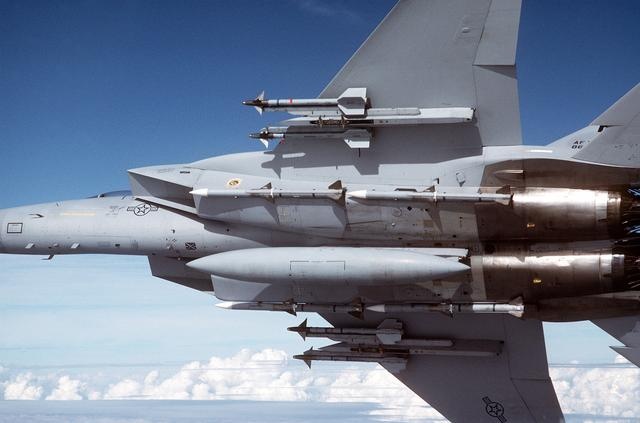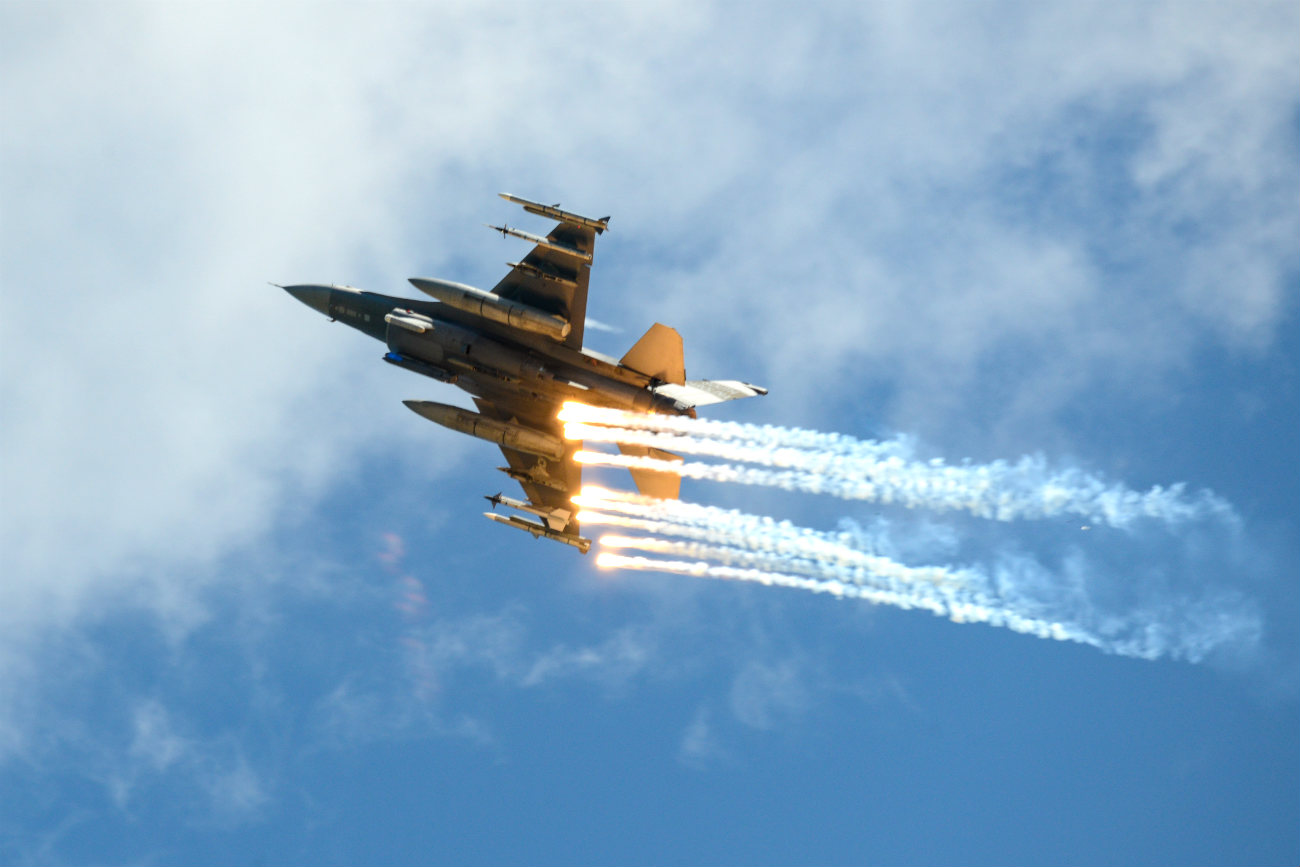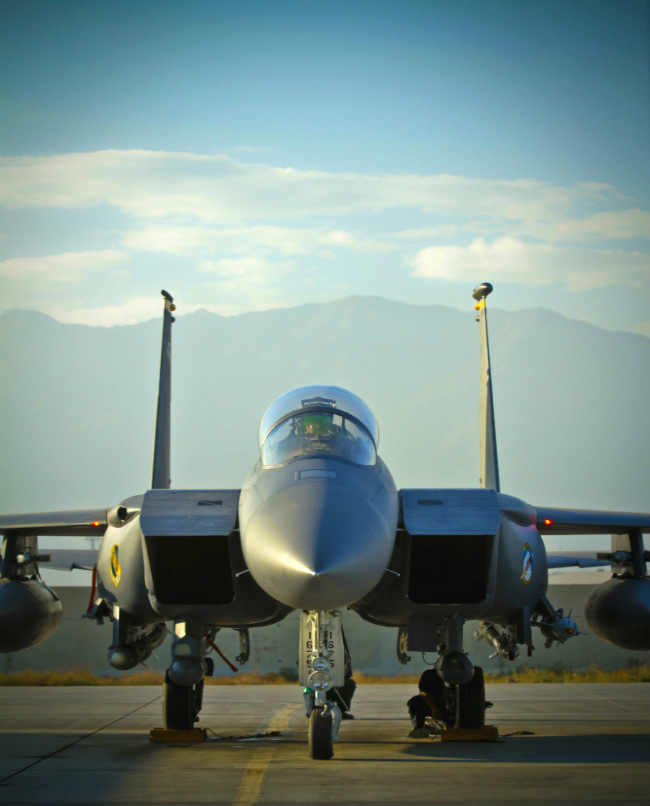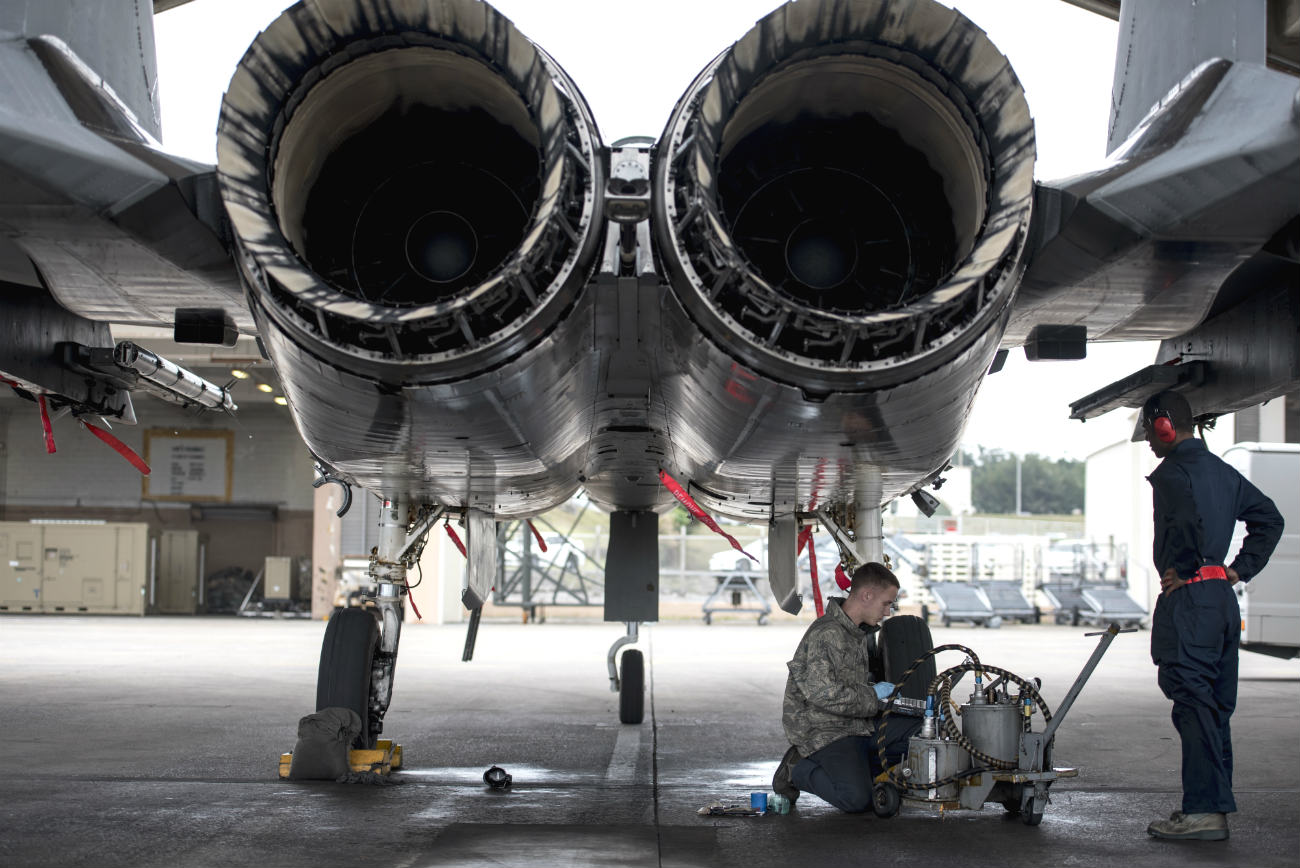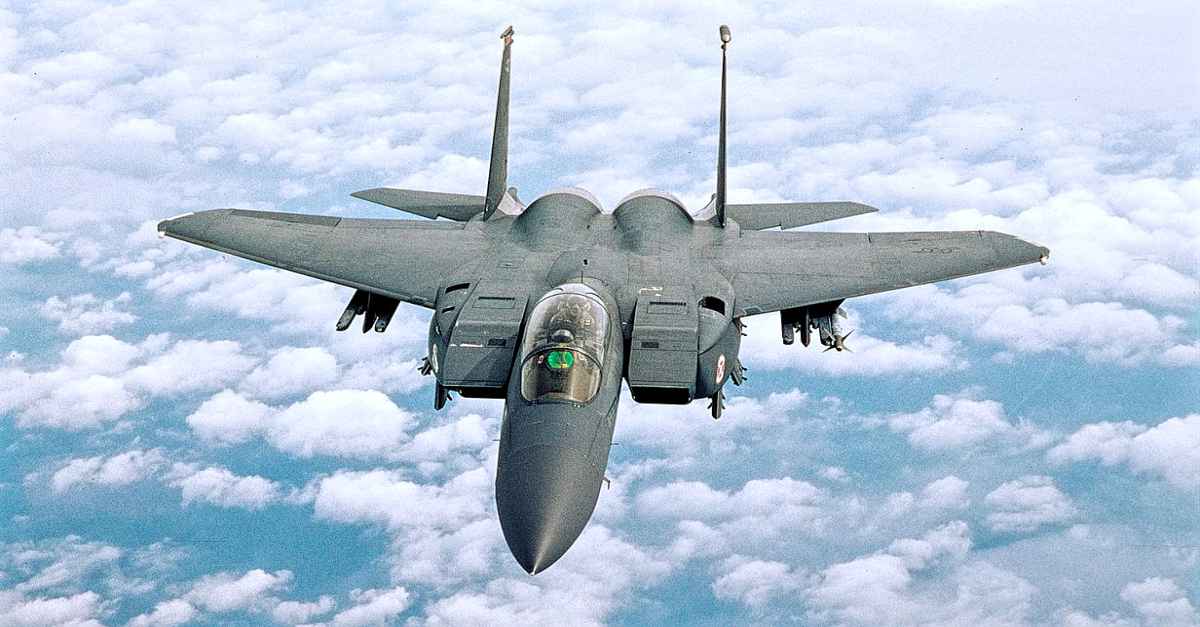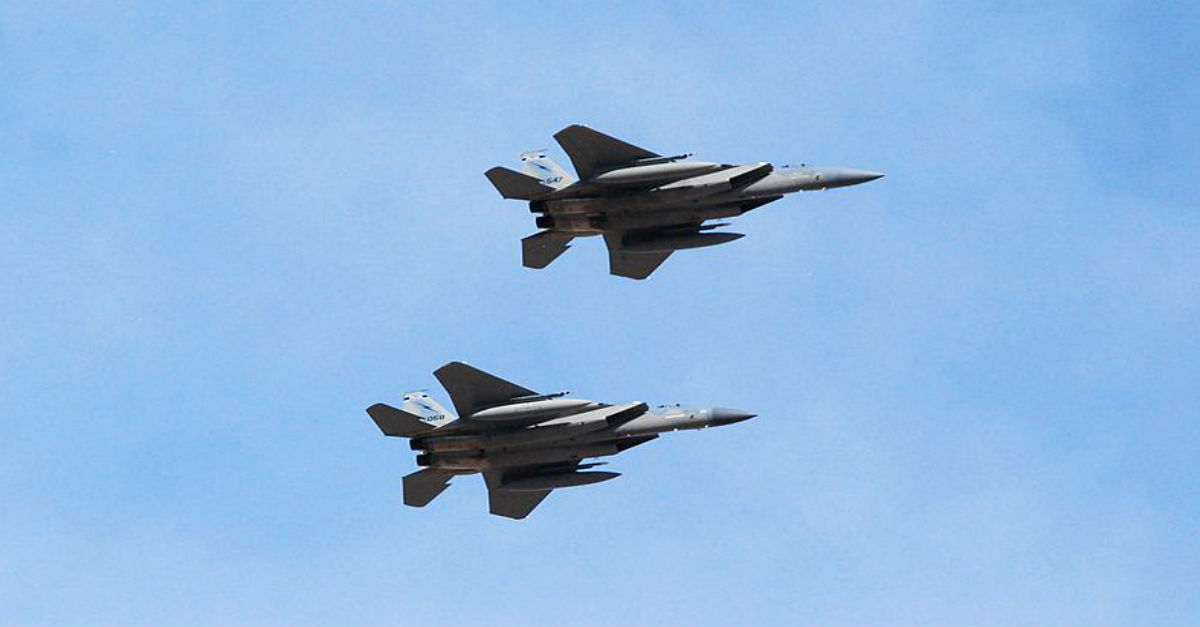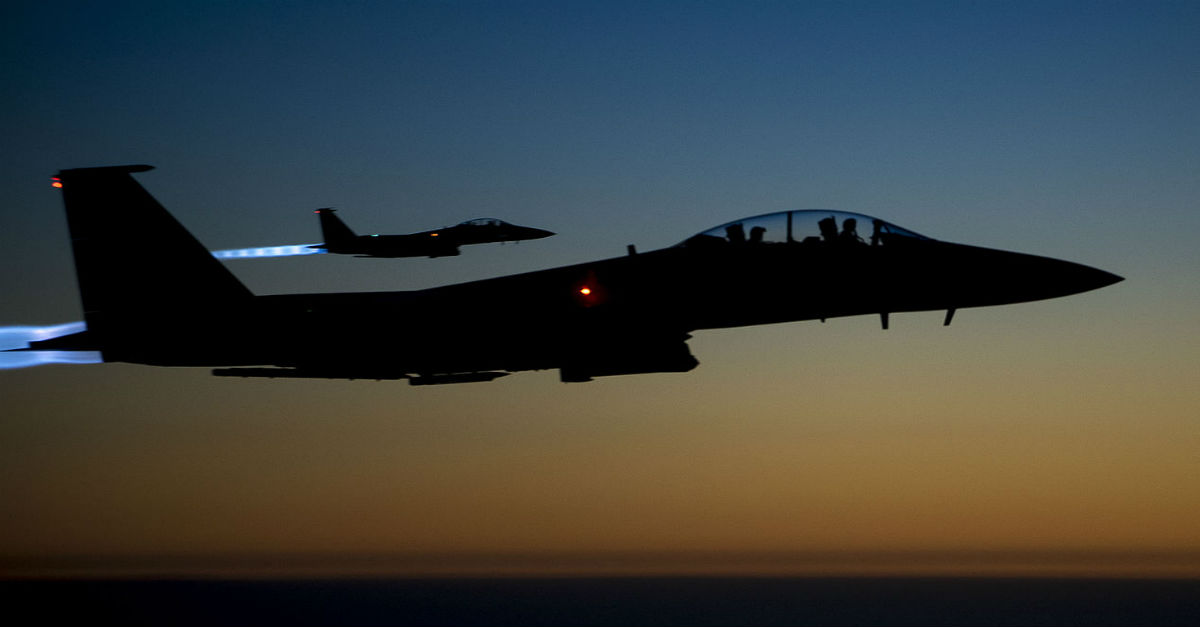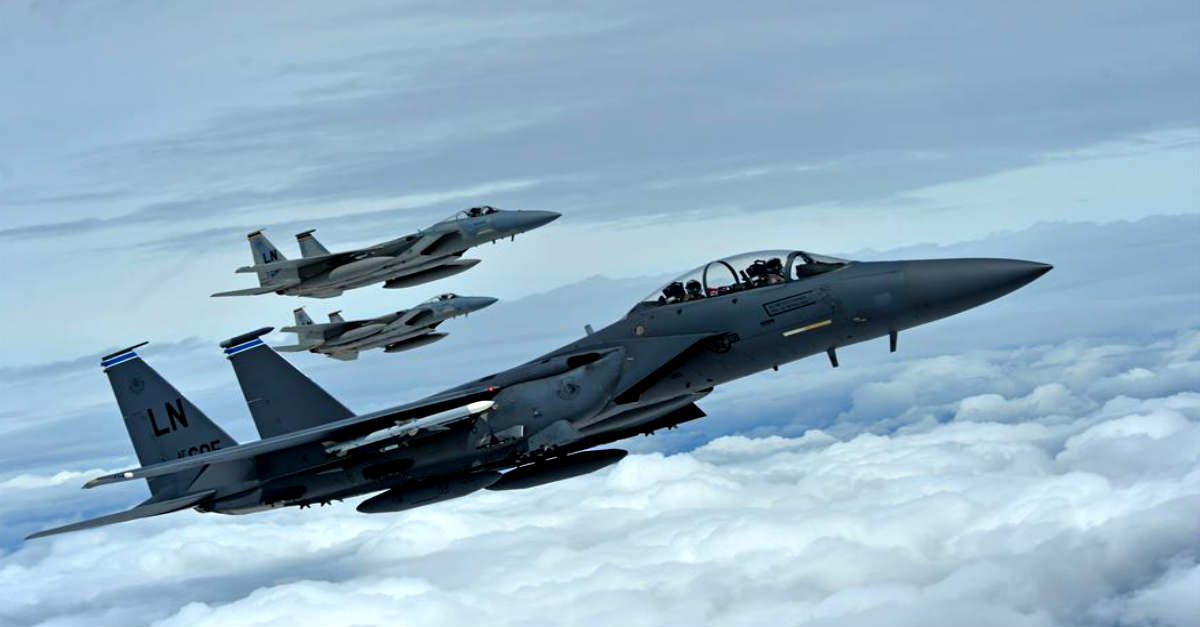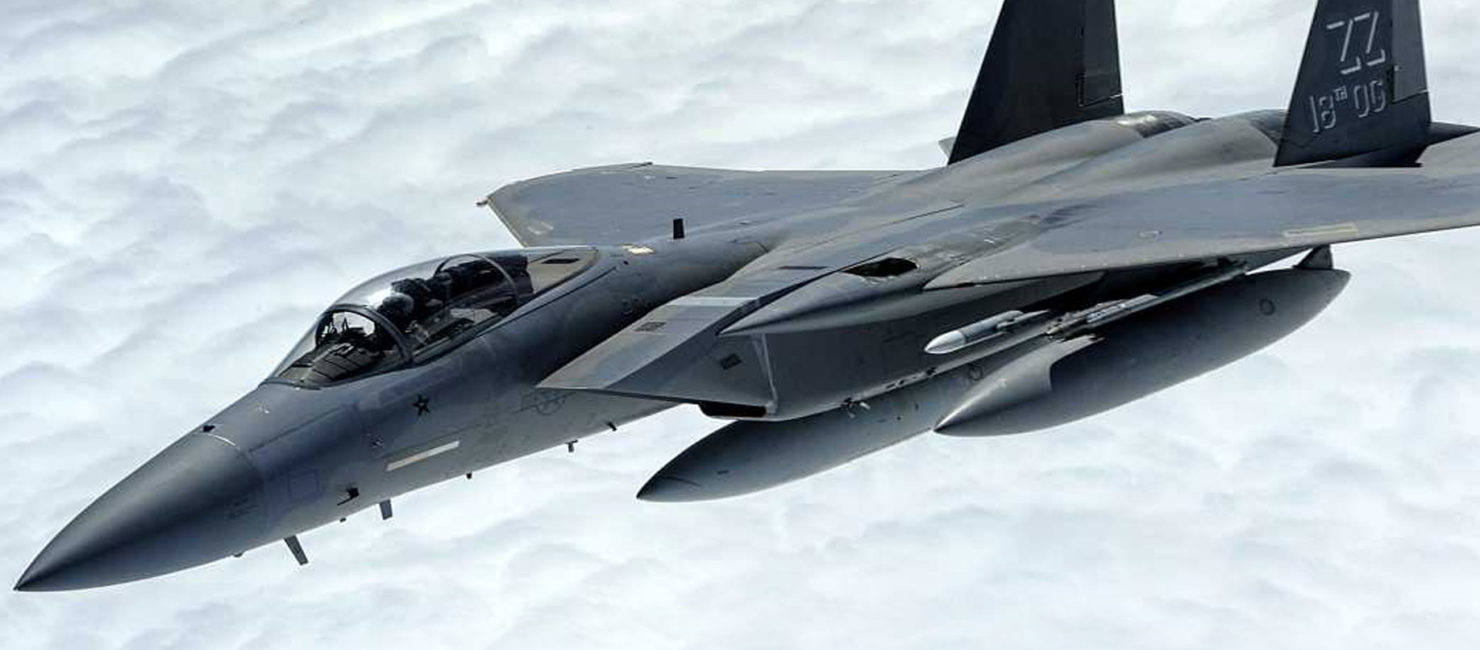
The F-15 Eagle is an air superiority jet fighter with an unparalleled record of performance in air-to-air combat. The first F-15 Eagle took off in 1972 and is actively maintained to this day within the U.S. Air Force and U.S. Air National Guard.

Multiple Roles
It is characterized by its high maneuverability, thrust-to-weight ratio, and excellent performance in all weather conditions. In air-to-air combat, the F-15C/D/E can carry up to eight air-to-air missiles depending upon mission requirements. Advancements proposed by Boeing seek to increase that number to 16 air-to-air missiles. With recent upgrades to its avionics and software, the F-15 is expected to continue service past 2025. This will make it one of the oldest fighter aircraft still in service with the United States Air Force.
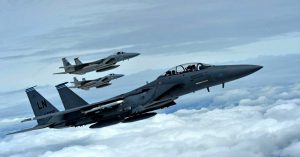
Upgrades
With the evolution of fifth generation fighter aircraft such as the F-22 Raptor and F-35 Lightning II, the F-15 is one of the few fourth generation fighter aircraft to stay toe-to-toe. It underwent vast improvements to ensure communication and coordination with the latest generation of multi-role stealth aircraft. The expectation of service past 2025 is based upon its current and projected air superiority against any current or future fighter aircraft produced by rival nations.
Recent developments in the F-15 have heavily focused on improving its air-to-air missile payload to 16, improving its Electronic Warfare suite, and decreasing its radar profile for enemy air defense.
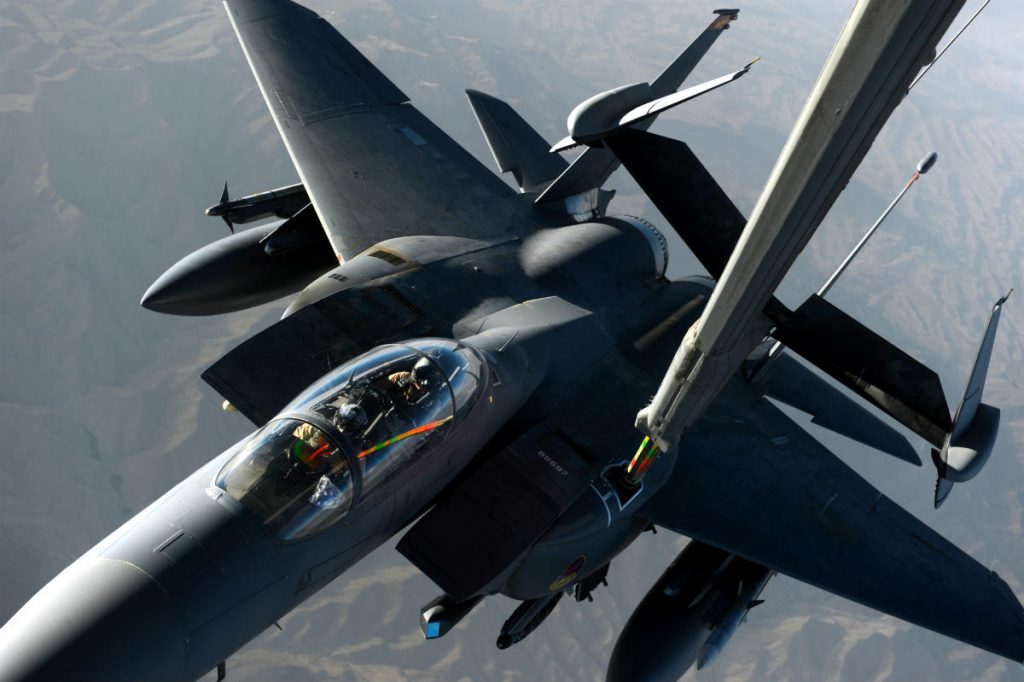
Variants
Outside of the United States, only three other nations maintain fleets of F-15s. Most notable amongst these is Israel, who was engaged in the first interdiction missions with resounding success. The F-15E Strike Eagle is a multirole fighter developed from its Eagle predecessor and has incorporated more functionality to enable additional mission parameters such as limited Close Air Support and tactical bombing sorties. The E variant has a second seat for a weapons officer to come on board to control weapon systems.
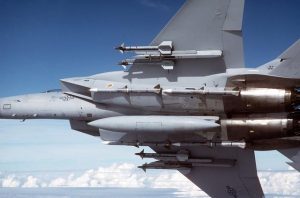
The standalone single-pilot F-15 C/Ds had systems capable of allowing the pilot to dogfight as well as target other aircraft. The addition of a weapons officer was thought to be mainly for advanced electronic warfare operations should the F-15E Strike Eagle have to operate against hostile enemy air defense.
Delayed Replacement
The only versions of the F-15 that remain in service in the United States are the C/D/E variants. The Oregon National Guard retired the earlier F-15A/Bs in 2009 but maintains an upgraded fleet of F-15Cs.
Initially, the F-22 Raptor was scheduled to replace the entire remaining fleet of F-15s in service by the United States Air Force. However, F-22 Raptor budget cuts and delays have likely forced the Air Force to keep the F-15. Boeing has released technological upgrades that are meant to make the existing F-15s much harder to detect and extend their range through the use of conformal fuel tanks. These improvements are meant to ensure the F-15 fleet maintains its superiority until 2025 and relevant until at least 2040.
The F-15 Eagle was originally produced by the McDonnell Douglas Corp. It is powered by two Pratt & Whitney F100-PW-100 turbofan engines with afterburners. Each Pratt & Whitney engine is capable of individually producing up to (C/D models) 25,000 lbs.
As of September 2016, The United States Air Force maintains the largest fleet of F-15C/D/Es. Less than half that number are assigned to Air National Guard squadrons. In terms of competition, the only existing fighter jets known as active threats to the F-15 C/D/E are the Sukhoi Su-24 and the MiG-29M.
Now see more beautiful images of the Strike Eagle!
See F-15 Eagle Specifications
| Length: 63 feet, 9 inches (19.43 m) |
| Height: 18 feet, 8 inches (5.69 m) |
| Wingspan: 42 feet, 10 inches (13.06 m) |
| Speed: 1,875 mph (Mach 2.5-plus at sea level) |
| Ceiling: 65,000 feet (19,697 m) |
| Maximum Takeoff Weight: (C/D models) 68,000 lbs. (30,600 kg) |
| Range: 3,450 miles (3,000 nautical miles) ferry range with conformal fueltanks and three external fuel tanks |
| Crew: F-15A/C: one. F-15B/D: two |
| Unit Cost: $15 million (FY 98 constant/adjusted) |

